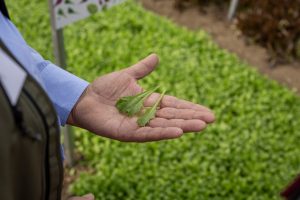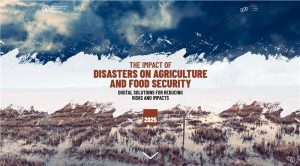The asparagus season started in late February with the first harvests. Small initial volumes have progressively increased throughout March as temperatures have risen. This year, the Centro Sur (Cesurca) cooperative expects to market around 7.8 million kilos of Spanish asparagus, provided there are no unexpected disruptions.
This forecast aligns with projections from the Interprofessional Agri-Food Organization of Green Asparagus of Spain, which estimates that the sector will produce 10-15% more asparagus this year compared to 2024. Antonio Francisco Zamora, president of Cesurca, remains optimistic about the season’s development. “In Granada, the recent rainfall has been very beneficial. It hasn’t caused damage, and if everything continues as expected, it will contribute to good size and quality,” he states. However, the situation is different in other regions. “Some areas in Guadalajara have experienced flooding of crops,” he adds.
Chronic labor shortage
One of the biggest challenges in the sector is the ongoing labor shortage. In Granada alone, around 12,000 workers are needed for the asparagus season.
In the case of Cesurca, they have a team of seasonal workers who return year after year, but there is always a 20% turnover rate. “Every year, it becomes harder to find labor. This is a chronic issue in many countries,” Zamora explains. Although government and businesses are working together with good intentions, “solutions are neither easy nor quick.” Cesurca is advocating for a policy allowing temporary farm work to be compatible with certain social benefits, similar to what was permitted during the COVID-19 pandemic. Another long-term solution involves the adoption of harvesting machinery.
Prototypes are currently under development in Germany and other Central European countries, where the labor shortage is even more critical than in Spain. However, the first models will not be available until 2027/28.”Once they are introduced, we will have to evaluate their effectiveness, the required investment, and whether they are feasible for different types of farms,” Zamora explains.
Mexico: Uncertainty over tariffs
How will Trump’s proposed 25% tariff increase on Mexican exports affect asparagus trade flows?
According to Zamora, this season’s Spanish asparagus market is unlikely to be affected. “Due to various factors, Mexico’s production is 25-30% lower than last year, and their volumes will decline around the third week of March. Even if their exports to Europe increase, we do not expect a significant impact this year. However, next year could be a different story.” Mexico is increasingly turning to Europe due to geopolitical shifts, and its impact will depend on supply and demand dynamics.
“Ultimately, tariffs affect the consumer, who will have to bear the additional cost,” says Zamora. He believes the EU should anticipate this scenario and explore possible compensations for European producers if Mexican imports increase. “The sector and policymakers need to work together and focus more on defending European products by promoting EU-origin asparagus,” Zamora concludes.























